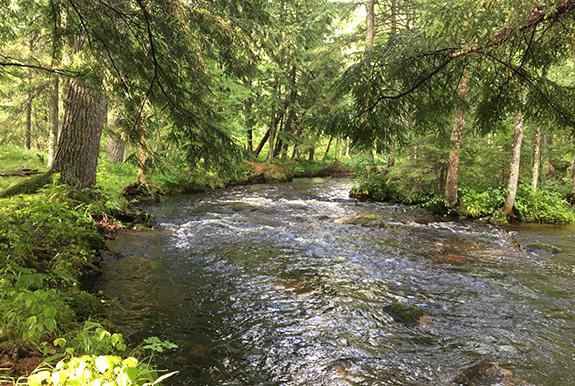September
The major hatches are in the past for this year and streams and rivers are running well fed by rains, some though are warmed to temperatures exceeding 65 degrees F. Most bodies of water remain cooled, not so much by cooler than normal atmospheric temperatures rather from groundwater sources. The aquatic bugs of our region are not significantly influenced by these variables; however, as many fishers have personally observed, trout are very sensitive to both reduced stream flows and increased temperature.
The headwater streams which receive most of their volume from groundwater are the saving grace of our trout populations. Rain events or snowmelts of the recent past are the source and force behind groundwater movement. These flows enter streams by means of seeps along its margins or as aggressively as a flush of water permeating up through the cobble and sandy gravel long its bed.
Trout sense these areas and seek them out as cool water sanctuaries; a place of refuge in rivers that warm to levels exceeding 65 degrees F. Regional rivers such as lower portions of the Waupaca, Wolf, Little Wolf, Pine and Mecan illustrate this trend. These rivers are worth understanding because they are home to mayfly populations that fly fishers take note of. The white mayfly, Ephoron leukon, is a well known regional example of a late summer bug that prefers to live in larger rivers and can tolerate warm water.
While searching for the white mayfly hatch in these warmer rivers, I found one of the thermal sanctuaries. It is not that I can feel the coolness change in water temperature through waders, however by trailing a hand in the water while wading makes it possible to sense the change.
The cooling flow from a feeder stream I found was silent in its movement at its confluence with the mainstream. Upstream though the feeder stream produced a refreshing sound burbling over small riffles between banks grown with blossoming touch-me-nots and overhanging cedar. I was careful not to disturb trout huddled in its depths as I lifted rocks from the riffle in search for bugs.
Bugs of many kinds clung to rocks some in stone cases and others in shelters of debris and many scrambled among the mosses and leaped for the water. They were Baetis, Hydropsychids, Chironomids, Simulids and Plecopterans. It is not that we need to name the bugs present for fishing purposes, rather it is to know they are there as food for the brookies sheltered in riffles and pools.
In my mind’s eye I could imagine a gingerly delivered cast, a flashy movement and the tug on the line as a brookie dashes back to cover under low cedar bows. I know better though as I have many Pass Lake flies hanging in cedar branches.
Downstream from the mouth of the feeder stream I measured the thermal effect for at least a distance of 20 yards to a point where rocks and current completed the blending of stream and river. Initially the temperature was 60 degrees F, in a narrow plume several yards wide extending downstream along the river bank. Quickly the temperature rose by five degrees, then another two and finally it was at ambient river temperature.
This season Central Wisconsin trout streams have run at full-bank mode most of the time making for happy trout and smiling fishers. Maybe they were smiling because they were not asked how it was fishing in deep swift waters?


